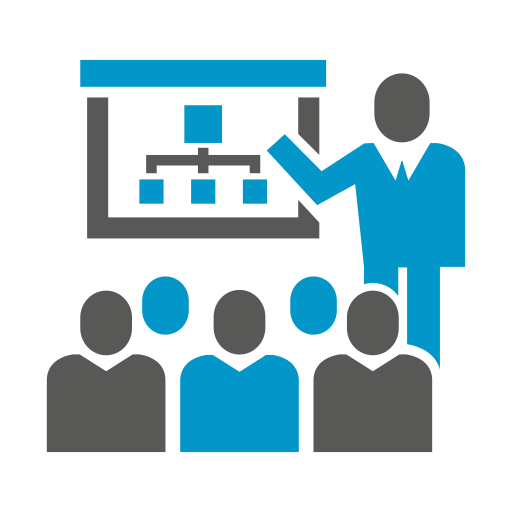Description
WHAT YOU WILL LEARN
A Certified Cloud Architect has demonstrated proficiency in the technology architecture that underlies cloud platforms and cloud-based IT resources and solutions, and has mastered the hands-on application of design patterns, principles and practices used to engineer and evolve such environments. Depending on the exam format chosen, attaining the Cloud Architect Certification can require passing a single exam or multiple exams. Those who achieve this certification receive an official digital Certificate of Excellence, as well as a digital Certification Badge from Acclaim/Credly with an account that supports the online verification of certification status.
MODULE OVERVIEW
The Cloud Architect certification track is associated with the following courses and the courses can be delivered via instructor-led training.
CCP Module 1: Fundamental Cloud Computing
This foundational course provides end-to-end coverage of fundamental cloud computing topics as they pertain to both technology and business considerations. The course content is divided into a series of modular sections, each of which is accompanied by one or more hands-on exercises.
The following primary topics are covered:
– Fundamental Cloud Computing Terminology and Concepts
– Basics of Virtualization
– Specific Characteristics that Define a Cloud
– Understanding Elasticity, Resiliency, On-Demand and Measured Usage
– Benefits, Challenges and Risks of Contemporary Cloud Computing Platforms and Cloud Services
– Cloud Resource Administrator and Cloud Service Owner Roles
– Cloud Service and Cloud Service Consumer Roles
– Understanding the Software as a Service (SaaS) Cloud Delivery Model
– Understanding the Platform as a Service (PaaS) Cloud Delivery Model
– Understanding the Infrastructure as a Service (IaaS) Cloud Delivery Model
– Combining Cloud Delivery Models
– Public Cloud, Private Cloud, Hybrid Cloud and Community Cloud Deployment Models
– Business Cost Metrics and Formulas for Comparing and Calculating Cloud and On-Premise Solution Costs
– Formulas for Calculating and Rating SLA Quality of Service Characteristics
CCP Module 2: Cloud Technology Concepts
This course explores a range of the most important and relevant technology-related topics that pertain to contemporary cloud computing platforms. The course content does not get into implementation or programming details, but instead keeps coverage at a conceptual level, focusing on topics that address cloud service architecture, cloud security threats and technologies, virtualization and containerization.
Proven technologies are defined and classified as concrete architectural building blocks called “mechanisms”. The purpose of this course is to introduce cloud computing-related technology topics in a manner that is accessible to a wide range of IT professionals, as well as to empower participants with an understanding of the fundamental mechanics of a cloud platform, how the different “moving parts” can be combined, and how to address common threats and pitfalls.
The following primary topics are covered:
– Cloud Computing Mechanisms that Establish Architectural Building Blocks
– Virtual Servers, Containers, Ready-Made Environments, Failover Systems & Pay-Per-Use Monitors
– Automated Scaling Listeners, Multi-Device Brokers & Resource Replication
– Understanding How Individual Cloud Computing Mechanisms Support Cloud Characteristics
– An Introduction to Containerization, Container Hosting & Logical Pod Containers
– A Comparison of Containerization and Virtualization
– Cloud Balancing and Cloud Bursting Architectures
– Common Risks, Threats and Vulnerabilities of Cloud-based Services & Cloud-hosted Solutions
– Cloud Security Mechanisms used to Counter Threats and Attacks
– Understanding Cloud-Based Security Groups and Hardened Virtual Server Images
– Cloud Service Implementation Mediums (including Web Services and REST Services)
– Cloud Storage Benefits and Challenges, Cloud Storage Services, Technologies and Approaches
– Non-Relational (NoSQL) Storage Compared to Relational Storage
– Cloud Service Testing Considerations and Testing Types
– Service Grids and Autonomic Computing
– Cloud Computing Industry Standards Organizations
CCP Module 3: Fundamental Cloud Architecture
This course provides provides a technical drill-down into the inner workings and mechanics of foundational cloud computing platforms. Private and public cloud environments are dissected into concrete, componentized building blocks (referred to as “patterns”) that individually represent platform feature-sets, functions and/or artifacts, and are collectively applied to establish distinct technology architecture layers. Building upon these foundations, Software-as-a-Service (SaaS), Platform-as-a-Service (PaaS) and Infrastructure-as-a-Service (IaaS) environments are further explored as compound patterns, comprised of unique and shared building blocks.
The course is structured as a guided tour through these architectural layers, describing primary components, highlighting shared components, exploring containerization extensions and explaining how building blocks can be assembled and implemented via cloud computing mechanisms and practices.
The following primary topics are covered:
– Understanding the Technology Architecture of Private Clouds and Public Clouds
– Understanding the Technology Architecture of SaaS, PaaS and ISaaS Environments
– Automated Administration and Centralized Remote Administration
– Container Sidecars and Container Chains
– Self-Provisioning and Platform Provisioning
– Rich Containers and Logical Pod Containers
– Bare-Metal Provisioning and Resource Management
– Single-Node Multi-Containers and Multipath Resource Access
– Usage Monitoring and Broad Access
– Realtime Resource Availability and Pay-as-You-Go
– Shared Resources and Resource Pooling
– Rapid Provisioning and Resource Reservation
– Non-Disruptive Service Relocation and Service State Management
– Workload Distribution and Dynamic Scalability
CCP Module 4: Advanced Cloud Architecture
This course builds upon CCP Module 4 to provide a deep dive into elastic, resilient, multitenant and containerized technology architectures, as well as specialized solution architectures, such as cloud bursting and cloud balancing.
Through the study of architectural mechanisms, industry technologies and design patterns, both core and extended components are described that combine to realize elasticity, resiliency, multitenancy and associated containerization extensions as primary characteristics of cloud platforms. By leveraging these native and enhanced scalability and failover-related feature-sets, specialized solution architectures are described to enable bursting between clouds and on-premise and cloud environments, as well as the balancing of runtime loads across clouds for performance and failover purposes.
The course organizes content so that architectural layers are explored sequentially and, where appropriate, in relation to each other. Newly introduced primary components are described and shared components across architectural layers are highlighted.
The following primary topics are covered:
– Understanding the Technology Architecture of Elastic, Resilient, Multitenant and Containerized Environments
– Elastic Resource Capacity and Elastic Network Capacity
– Multi-Container Isolation Control and Volatile Container Configuration
– Serverless Deployment and Elastic Disk Provisioning
– Leader Node Election and Micro Scatter-Gather
– Hypervisor Clustering and Redundant Storage
– Storage Service Gateway and Live Storage Migration
– LUN Storage and LUN Migration
– Dynamic Failure Detection and Recovery and Zero Downtime
– Service Load Balancing and Load Balanced Virtual Server Instances
– Load Balanced Virtual Switches and Persistent Virtual Network Configurations
– Dynamic Data Normalization and Synchronized Operating State
– Intra-Storage Device Vertical Tiering and Cross-Storage Device Vertical Tiering
– Storage Workload Management and Storage Maintenance Window
– Direct I/O Access and Direct LUN Access
– Cloud Balancing and Redundant Physical Connection for Virtual Servers
– Cloud Bursting, including Burst In and Burst Out to Private/Public Clouds
CCP Module 5: Cloud Architecture Lab
This course module presents participants with a series of exercises and problems that are designed to test their ability to apply their knowledge of topics covered previously in course modules 4 and 5. Completing this lab will help highlight areas that require further attention and will further prove hands-on proficiency in cloud computing design patterns, technology architecture layers, mechanisms, industry technologies and practices as they are applied and combined to solve real-world problems.
As a hands-on lab, this course provides a set of detailed exercises that require participants to solve a number of inter-related problems, with the ultimate goal of evaluating, designing and correcting technology architectures to fulfill specific sets of solution and business automation requirements.
For instructor-led delivery of this lab course, the Certified Cloud Trainer works closely with participants to ensure that all exercises are carried out completely and accurately. Attendees can voluntarily have exercises reviewed and graded as part of the class completion.
For individual completion of this course as part of the Module 6 Study Kit, a number of supplements are provided to help participants carry out exercises with guidance and resource references.
Duration: 5 days
PREREQUISITES
- There are no formal prerequisites for the certification exam
EXAM & CERTIFICATION
You can take exams anywhere in the world via Pearson VUE testing centers, Pearson VUE online proctoring and Arcitura on-site exam proctoring at your location.
You are provided with three flexible exam format options:
Complete Exam C90.CAR, a single combined exam for the entire Cloud Architect certification track. Recommended for those who want to only take a single exam that encompasses all course modules within this track.
Complete the partial version of Exam C90.CAR. Recommended for those who have already obtained a CCP certification and would like to achieve the Cloud Architect Certification without having to be retested on CCP Modules 1 and 2.
Complete one module-specific exam for each course module in Cloud Architect Certification track. This is recommended for those who want to progress gradually through the track and who would like to be assessed after each course module before proceeding to the next.








